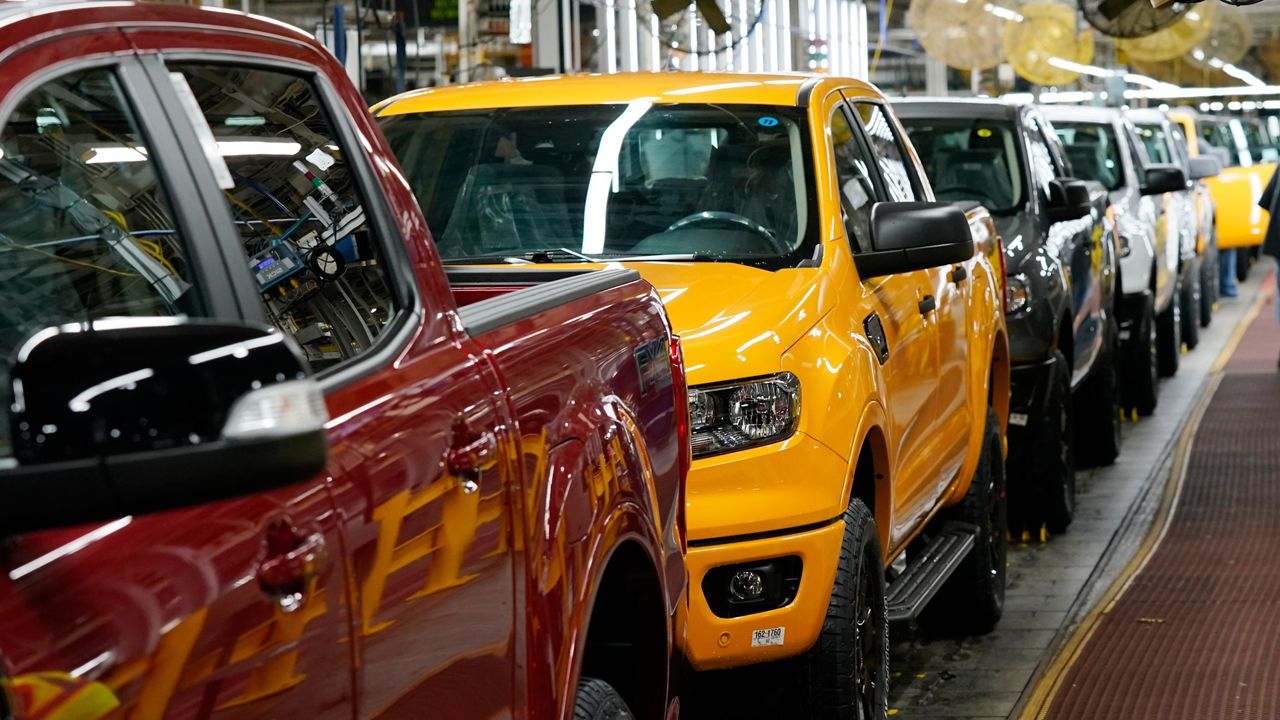Tall vehicles are more likely to injure and kill pedestrians, according to new research the Insurance Institute for Highway Safety published Tuesday.
The report found that vehicles with hood heights of more than 40 inches are 45% more likely to kill pedestrians after a crash compared with vehicles with hoods that are less than 30 inches tall. Front ends that have a more blunted, versus sloped, shape also pose greater risks to pedestrians.
“Some of today’s vehicles are pretty intimidating when you’re passing in front of them in a crosswalk,” IIHS President David Harkey said in a statement. “These results tell us our instincts are correct: More aggressive-looking vehicles can indeed do more harm.”
IIHS researchers noted that the average U.S. passenger vehicle today is four inches wider, 10 inches longer, eight inches taller and 1,000 pounds heavier than it was 30 years ago. The hoods of large pickup trucks are often nearly at eye level for many adults.
Large pickup trucks are some of the bestselling vehicles in the United States, including the Ford F-series, Chevy Silverado and Ram pickup, which have held the top spots for decades. Of the country's top ten bestselling vehicles, only one is a low-profile sedan. The rest are pickups and SUVs.
For its research, IIHS analyzed almost 18,000 crashes involving a single pedestrian and single passenger vehicle. Identifying the types of vehicles in those crashes, the researchers looked at the vehicles’ front-end measurements, including their hood heights and grille slopes.
Vehicles with hoods that were more than 40 inches off the ground that also had a grille sloped at 65 degrees or less were 45% more likely to cause a pedestrian death compared with vehicles that had a similar grille slope and hood height of 30 inches or less. Having a sloped front end did not reduce the pedestrian fatality risk of vehicles with the tallest hoods.
The slope of a vehicle’s hood also affected fatalities, the study found. Flat hoods increased the risk of a fatality 25% compared with vehicles that had more sloping hoods, regardless of their front-end height and shape.
“Manufacturers can make vehicles less dangerous to pedestrians by lowering the front end of the hood and angling the grille and hood to create a sloped profile,” IIHS Senior Research Transportation Engineer Wen Hu said in a statement. “There’s no functional benefit to these massive, blocky fronts.”
IIHS researchers cited a study from the International Center for Automotive Medicine Pedestrian Consortium that found tall vehicles caused more severe head injuries. Those with blunt fronts that hit pedestrians also caused more frequent and severe injuries to their hips and torsos because they were thrown forward, whereas taller vehicles with sloped fronts usually rolled pedestrians onto the hood. Shorter pedestrians suffered more severe injuries.
After spiking to record levels during the pandemic, traffic fatalities have declined for five straight quarters, according to the most recent analysis from the National Highway Traffic Safety Administration. Even so, pedestrian crash fatalities have increased 80% since 2009. About 20 pedestrians lost their lives every day in 2021 from being struck by vehicles.
The new IIHS research on hood heights bolsters earlier research from the institute that found SUVs, pickups, vans and minivans are substantially more likely to hit pedestrians when making turns. That earlier research suggested that larger vehicles may inhibit drivers’ ability to see people crossing the street.



